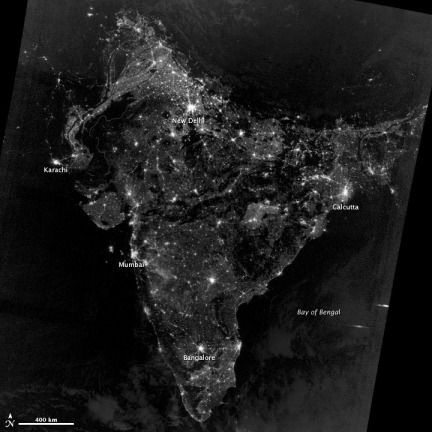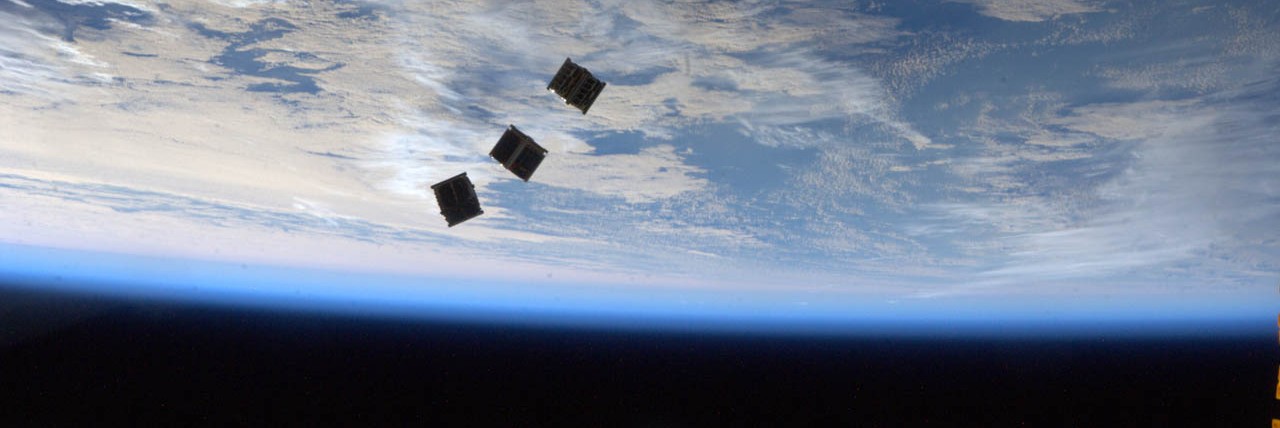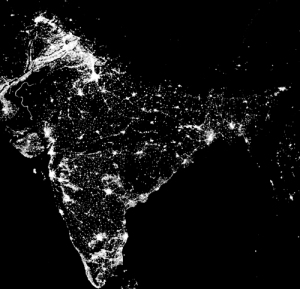
This image is result of image enhancement by NOAA scientist to showing population growth between “1992 – 2003”. This is NOT image of India on Diwali night.
There was a hoax spreading over all social media websites since past couple of years. A coloured image (Shown Above) of India taken from space, claiming the colours are because of lights during festival of Diwali. A year ago I and Omkar spent a lot of time to dig out from where that hoax started. But all went in vain. Although today I found original information about it here – Earth Observatory (EO) dated November 15, 2012.
EO Website added “In reality, any extra light produced during Diwali is so subtle that it is likely imperceptible when observed from space.” It also states image circulating on social media was not exact what it claimed about colours of Diwali.
In 2003 NOAA (USA’s National Oceanic and Atmospheric Administration) scientist Chris Elvidge used data of population growth over time and enhanced the image by various colours.
- White – prior to 1992
- Blue – became visible in 1992
- Green – became visible in 1998
- Red – 2003
Original image (Shown below) is “Night-time lights of India”.
In other news yesterday NASA also released chunk of images. Many news agencies have noted it and now real photo of India on Diwali night is floating in Indian news papers.
Nasa’s Soumi NPP satellite released new images of the earth during nights called Black Marble. Soumi NPP collects remotely sensed data of land, ocean and atmosphere and distributes to various scientific communities for processing. Image set has many images of earth globe, continents and countries check here and –
http://www.nasa.gov/mission_pages/NPP/news/earth-at-night.html
Image of south Asia shown below is real! This image was acquired on during Diwali festival on November 12, 2012. To my surprise website mentions Diwali and describes it as – “Every fall, Hindus around the world light lamps, candles, and firecrackers as part of a five-day festival known as Diwali. The celebration, which has roots as a harvest festival, usually falls between mid-October and mid-November. In 2012, it began on November 11.”

On November 12, 2012, the Visible Infrared Imaging Radiometer Suite (VIIRS) on the Suomi NPP satellite captured this nighttime view of southern Asia. The image is based on data collected by the VIIRS “day-night band,” which detects light in a range of wavelengths from green to near-infrared. The image has been brightened to make the city lights easier to distinguish.
Credits: NOAA, NASA





